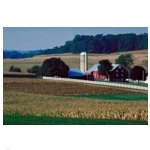 While most of the activity and discussion around small cells has focused on high-traffic urban areas, the concept also holds promise for rural areas as an announcement yesterday from Parallel Wireless illustrates. The company has developed cellular network equipment using small cell concepts but optimized for use in hard-to-reach rural areas. Yesterday’s announcement involved a wireless network operator in England, but a Parallel Wireless spokeswoman said the company expects to sell the equipment worldwide.
While most of the activity and discussion around small cells has focused on high-traffic urban areas, the concept also holds promise for rural areas as an announcement yesterday from Parallel Wireless illustrates. The company has developed cellular network equipment using small cell concepts but optimized for use in hard-to-reach rural areas. Yesterday’s announcement involved a wireless network operator in England, but a Parallel Wireless spokeswoman said the company expects to sell the equipment worldwide.
The Parallel Wireless equipment includes a CWS (for converged wireless system) that acts as a small LTE base station and which also has on-board mesh wireless connectivity. By installing multiple CWSs, a wireless network operator can create a mesh backhaul network, eliminating the need to bring fiber to each CWS.
A separate piece of equipment known as an LTE access controller (LAC) provides logic and control functionality for the small cell network and can be located remotely. According to a Parallel Wireless press release, the LAC uses software defined networking and network function virtualization to manage radio access network configurations in real time. In keeping with NFV concepts, the LAC runs on any commercial off the shelf hardware.
Rural Small Cells
The CWS small cell with built-in wireless mesh backhaul capability is unique, the Parallel Wireless spokesperson said – and by using that capability, UK wireless operator EE was able to bring service to a rural valley to which it would have been cost-prohibitive to bring fiber.
The Parallel Wireless spokeswoman declined to provide a specific coverage range for the CWS, noting that it varies based on a number of factors including mounting height. But she noted that in the EE deployment, only three CWS nodes were required to cover a single community. According to a Parallel Wireless press release, that community has 129 dwellings and 347 residents.

